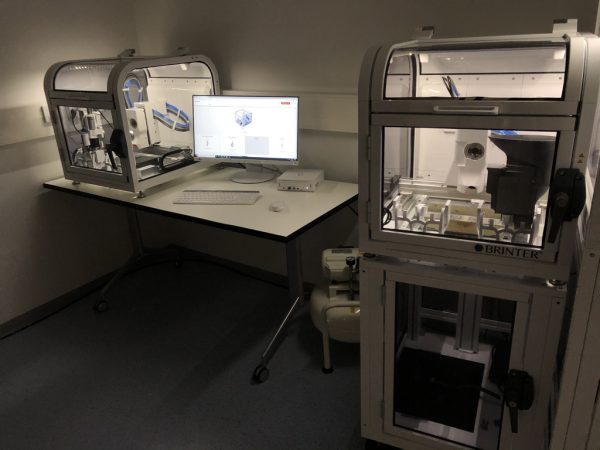To foster space exploration & terrestrial benefits via human spaceflight features, the European Space Agency (ESA) is searching for microgravity’s effects on human tissue. It helps them to create advanced solutions that keep astronauts fit & healthy during long-term space missions and enhance their life on Earth.
To do so, Redwire Space NV, the team working on the project will rely on a 3D bioprinter supplied by OEM Brinter AM Technologies Oy. The project consists of designing, developing & deploying the 3D-BioSystem facility for an advanced space research program on the International Space Station (ISS) being funded by the exploration program of the ESA.
Brinter AM will adapt its flagship product, the Brinter Core to generate in-orbit 3D biosamples for meeting space requirements. Brinter’s 3D bioprinter will be seamlessly integrated into the 3D-BioSystem facility in the ISS Columbus module to test microgravity effects on 3D-printed cell formation.
The 3D printing of cell constructs can reform ISS human space exploration missions as modern combat to health emergencies. It can also be used as testbed elements for advanced scientific research & development like personalized drug development testing, toxicology & human spare elements.
For futuristic space exploring missions, novel technologies must enable the astronauts to treat the alarming health concerns autonomously as a precautionary measure since returning to Earth is an ardent task.
The CEO of Brinter AM Technologies Oy, Mr. Tomi Kalpio suggests that “Bioprinting technologies have great potential to support medical treatment in space and increase the crew’s autonomy on long-term missions. Astronauts could create tissue-like constructs to replace damaged parts of their bodies, for example, to treat skin burns or bone damages, or print personalized drugs that ideally match the person.”
The process of merging cell or tissue-specific biomaterials with various cell types. High-definition 3D bioprinters can allow scientists to build & improve tissue modeling strategies for understanding the biophysical mechanisms of tissue generation, regeneration & longevity.
The benefits of 3D bioprinting in space are due to microgravity as cells exhibit spatially unrestricted growth & transform into complex 3D aggregates different from typical cell growth in monolayer (2D) cultures you see on Earth.
3D cultivation consists of 3D bioprinted cells, organoids, tissue explants, and 3D cell matrixes for monitoring the additional effects of microgravity, radiation & other spaceflight factors on tissues like cartilage, epithelia-mesenchyme, vascular networks, and ultimately organs.
Microgravity-oriented 3D tissue models are vital for gaining knowledge on bioengineering & bio fabrication demand to secure highly viable & operational (i.e., vascularized, and innervated) tissues. This helps in optimizing 3D bioprinting along with cell & tissue engineering tech solutions.
Kalpio also adds, “During human long-term deep space exploration missions, a lot must be done with less to make things work in the challenging space environment for various technology elements to get optimized and miniaturized. This project has ample synergy with the research & development work we have done in the last 5 years related to our mesh bio mods & our team is eagerly waiting to take the next step towards the moon.”
Author: Nagarjun M
Remember, you can post free-of-charge job opportunities in the AM Industry on 3D ADEPT Media or look for a job via our job board. Make sure to follow us on our social networks and subscribe to our weekly newsletter: Facebook, Twitter, LinkedIn & Instagram! If you want to be featured in the next issue of our digital magazine or if you hear a story that needs to be heard, make sure to send it to contact@3dadept.com.






